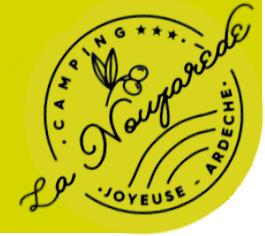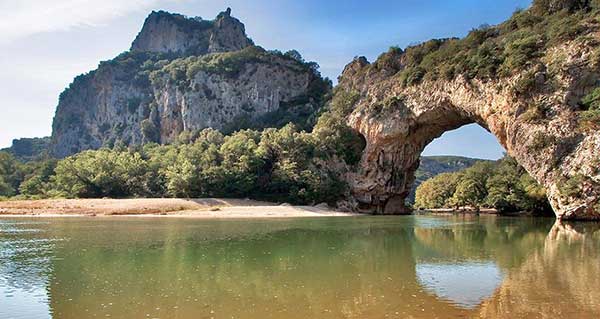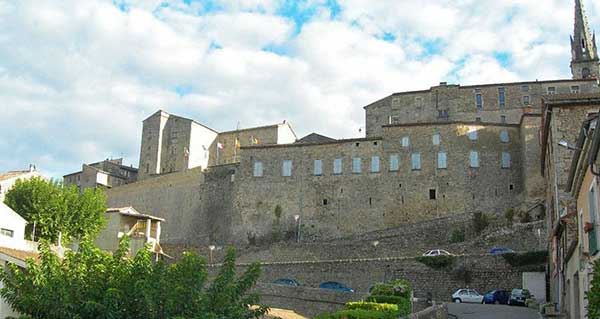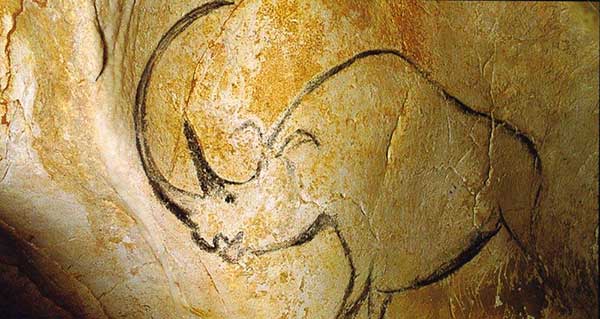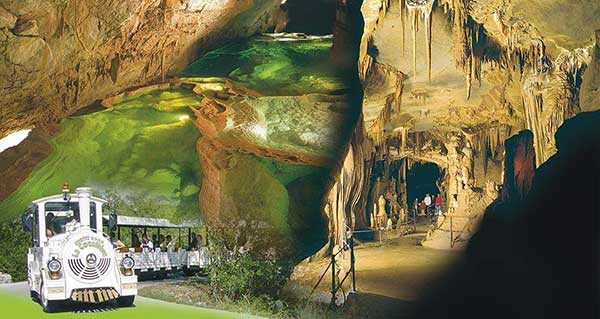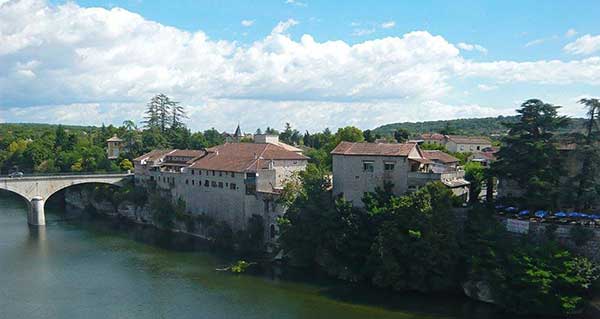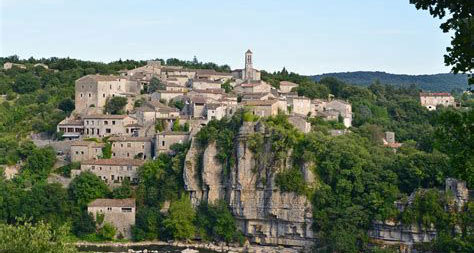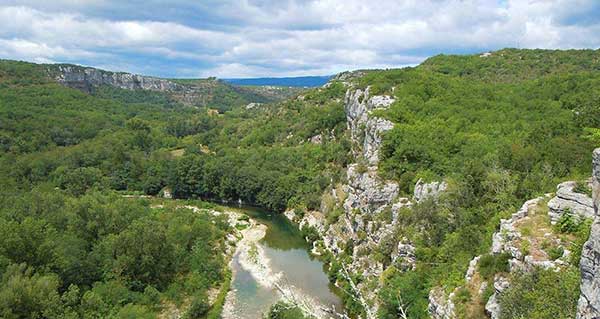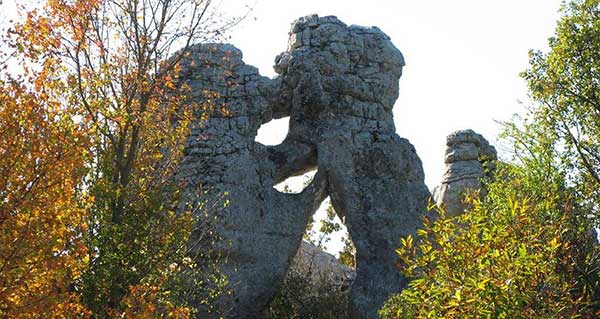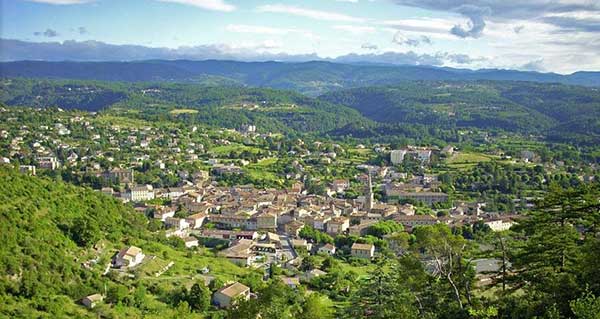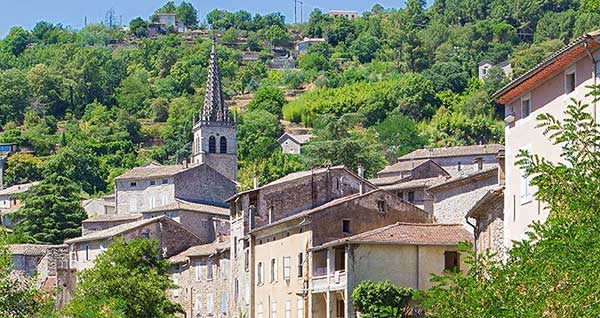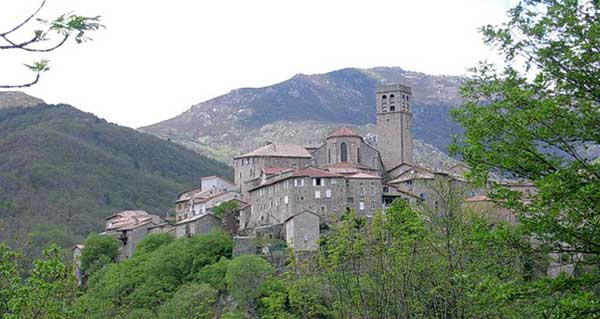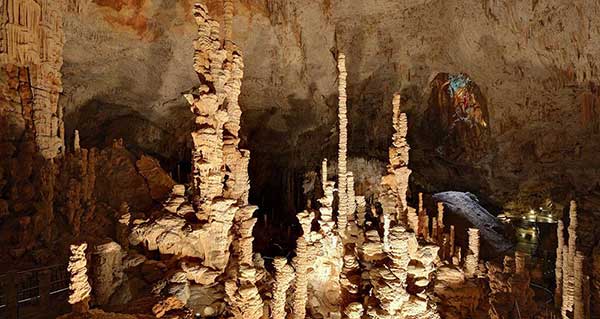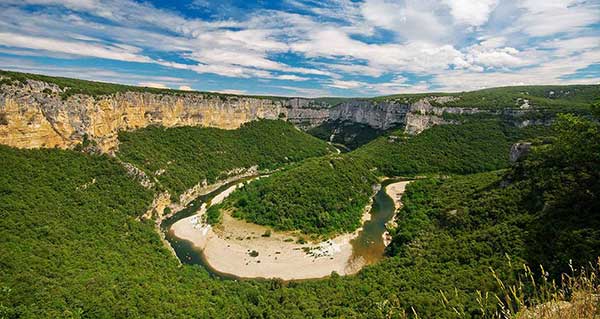Exploring the south of the Ardèche
The Ardèche, filled with mineral landscapes of caves and deep gorges, was shaped by water and time.
Man has always managed to cope with this unspoiled and untamable nature to live in the Ardèche, from the era of the wall paintings in the Chauvet cave to the medieval villages set between the meanders of the rivers or on top of the hills.
The entire region is scattered with typical villages, many of which are listed as ‘Most beautiful villages of France’.
The Ardèche is a region of delicious products that may be found on the markets, but it also offers outdoor sports and water sports like mountain biking and canoeing.
From camping la Nouzarède, you can explore the south of the Ardèche, boasting tourist sites like the Pont d'Arc, leading to the famous gorges.
Vallon Pont d'Arc
The Pont d’Arc is a natural bridge over the Ardèche, hollowed out in the rocks by the water.
This bridge with exceptional dimensions (54 metres high and 5 metres long), offers a natural access to the Gorges de l'Ardèche.
Joyeuse
This medieval town is named after the sword of Charlemagne, used during the battle that took place here.
The village sets between the rivers La Beaume and La Drobie, offering heritage from a wealthy past.
In the beginning of August, a festival will take you to the history of the village with shows, a parade and theatre.
Joyeuse is also a village of tasteful traditions, which can be discovered at the Musée de la Chataigne and the market (Wednesday morning).
Grotte Chauvet
The cave of Pont d'Arc, named after its discoverer called Chauvet, sets in the depths of the limestone plateau of the Ardèche.
It hides the oldest known wall paintings (dating from about 30.000 years before our era).
It concerns about 1000 paintings that remained untouched until the discovery of the cave in 1994.
In order to preserve the wall paintings, the caverne du Pont d’Arc was opened in 2015, an exact copy of the original cave.
Grotte de la Cocalière
During a guided visit in this cave, you can discover one of the underground gems of the Cévennes.
The grotte de la Cocalière, hollowed out in the limestone ground, is part of a network that runs through the north of the Gard for about thirty kilometres.
During your visit, you’ll be walking along some amazing concretions with exceptional shapes (stalactites, stalagmites, dripstone formations, etc...).
Ruoms
Ruoms, a town in the south of the Ardèche, is surrounded by some ideal rivers for canoeing and swimming (Ardèche, Chassezac).
The pleasant town offers ramparts and a shopping centre.
Another way to discover the centre is by visiting the nighttime market (on Wednesdays in July and August).
Wine lovers can visit the 1500 m² of exhibition rooms of the Néovinum, to discover all about the wines of the Ardèche and to taste them.
Balazuc
The village of Balazuc seems to be tightrope dancing on the cliffs that dominate the valley of the Ardèche.
As one of the Most beautiful villages of France, Balazuc has managed to preserve its medieval features like small alleyways, vaulted passages, a Norman church, the town-gate and the castle.
The beaches at the village foot allow you to swim in the Ardèche.
Vogüe
This typical village is listed as ‘Most beautiful village of France’ and edges the gorges de l'Ardèche.
The castle of the lords of Vogüe, built during the 15th century, dominates the lace of narrow streets of the centre.
In July and August, you’ll find a market on Monday mornings, where you can taste a number of products from the Ardèche.
Labeaume
Labeaume is a typical village leaning against the limestone cliffs and set between 3 rivers (the Beaume, the Ligne and the Ardèche).
Along the alleyways and covered passages you’ll find some lovely stone buildings, an olive oil mill and 14th century church.
All of it is dominated by a medieval castle. Around the village, the hiking tracks are edged by more than 140 dolmens. In summer, the town organises a classical music festival.
Forest of Païolive
The forest of Païolive, between the Ardèche and the Cévennes, is an exceptionally shaped forest. Green and white oaks are mingled with limestone cliffs
This mineral site is formed by a lace of clefts and the gorges du Chassezac.
Les Vans
The old town of Vans holds houses dating from the period between the 16th and the 19th centuries.
The cobblestoned square is the home of a colourful market (nighttime market on Tuesdays) and a lovely fountain.
You can also visit the town’s museum, dedicated to archeology and crafts.
Largentière
This medieval town became flourishing during the 11th century, thanks to the extraction of lead containing silver.
The main monuments were built during this period, including an episcopal castle that watches over the old town and the valley.
In July and August, various medieval activities are organised around the castle, taking you back to the Middle Ages.
Antraigues
The village of Antraigues sets at the heart of the Cévennes of the Ardèche.
This typical village, built on a mass of basalt, meets with 3 rivers.
The town boasts a number of craftsmen shops.
The cobblestoned streets will take you to the main square where you can appreciate the typical way of life in the Ardèche, with terraces and boules players.
Art can be found on every street corner, like the sculpted heads in the walls of the houses, inspired by Jean Saussac, a painter and former mayor of the village.
Also visit the home of Jean Ferrat, a singer and songwriter.
Here you’ll find recordings of radio programmes, examples of shows and much more...
Aven d'Orgnac
The Aven d’Orgnac, located in the south of the Ardèche, offers some amazing concretions.
This cave with three halls, where time and water left their traces, is listed as a Grand Site National.
During your visit to the depths of this cave, at 120 metres, you can enjoy a light and sound show.
Gorges de l'Ardèche
Between Vallon Pont d'Arc and Saint Martin d'Ardèche, the Ardèche river runs between the mountains, and has hollowed out a dazzling and unspoiled landscape of gorges.
For a length of 35 kilometres, the river has shaped caves, alcoves and canyons, but also the natural Pont d’Arc bridge.
Along the gorges de l’Ardèche you’ll find 25 rapids, ideal for the practise of canoeing.
